The week that was 31st July – 4th August
Perth- Singapore, weekend 5-8th August 2017
One of my key ‘moments” this week was my presentation at the Australian Institute of Architects (the AIA) in Perth, who had asked me to deliver a key note presentation about lighting that would credit them with points for their CPD certification. The Continuing Professional Development point system assures that practitioners remain active and up to date in their field of work. Architects in Western Australia need to accumulate 20 points over a year of which 10 are from formal events like the one I contributed to. My presentation called: “How Smart is your Lighting Design” dealt with the rapidly growing influence of smart (lighting) technologies and therefore the need for knowledge and expertise to apply the many smart and sustainable opportunities that are today presented to us. Below some of the learning outcomes for the participants:
1- Lighting design is a not done to only satisfy lux or energy meters, it is designed for people! Never forget the human (lighting) factor in design.
2- Smart and sustainable lighting is a balance between environment, human needs and economic considerations
3- Smart lighting controls are an essential tool to optimise the use of sustainable lighting systems
4- While technology is getting more complicated, simplicity should always be the drive for a good design.
5- The internet of things is here to stay and understanding its impact on lighting and lighting design is crucial for the future (of lighting design)
6- The current lighting market is built on a waste economy, lighting as a service could be a great and smart way for the future
7- Professional independent lighting designers are of tremendous added value to any architectural project (of course I had to put that in!)
In the Q+A session I received a very interesting question following up on a section of my presentation that was dealing with tunable light. Understanding that artificially reproducing the effects of natural light could positively influence human productivity, visual performance, moods, circadian rhythms and the like, one of the participants asked whether tunable light could be used to “manipulate” human behavior. I initially thought that he meant something along the lines of what is being done with the shortening of daylight cycles for chickens to reduce egg producing cycles to 22 or 23 hours (instead of 24), but he was thinking of “manipulating” antisocial behavior in prisons for instance. It was a very interesting thought. I was not immediately aware of any related study or applications to confirm this approach but thought logically this should certainly be possible. I promised to research this further as I feel that this “reversed” approach to using tunable lighting certainly has its merits. Hopefully more about this in the future…
In a worrying report from the BBC news channel I read this week that pollination is being threatened by artificial lighting. Researchers from the University of Bern in Switzerland discovered that artificial light at night was found to reduce visits of nocturnal pollinators by 62%! The impact, the researchers said, is a significant reduction in fruit production. The transformation from flower to fruit is greatly dependent on insect pollination, but according to the researchers the insect population is in rapid decline as result of habitat loss and disruption, pesticide use, invasive alien species and climate change. And now also because of artificial light at night! The most common night pollinators are the moths, the beetles and bugs. However the study shows light pollution from street lamps for example, result in nights that are not properly dark anymore with artificial lighting at night increasing globally at a rate of 6% per year! A worrying trend and something we as lighting designer should take very seriously. While we may not be able to stop the spread of lighting we certainly can play a major role in containing and controlling the detrimental effects of light pollution to our natural environment!
Finally a short comment about the upcoming DARC awards. The voting deadline is up shortly and for the first time I decided to participate with our entry, His Majesty’s Theatre in Perth. A majestic heritage project for which we managed to design a lighting concept for its façade using less than 1 KW of power installing the lights without compromising its heritage façade. My hesitation to participate is the voting system. While it is touted as a peer to peer voting system, very little people will take the time to actually study each project and actually vote on merits. Over the last few weeks I have been literally bombarded on a nearly daily basis with emails and posts from shortlisted entries asking people to vote for them. The reality I am finding is that people vote on visual pleasing images and whether the designer is either a friend or an existing or potential business opportunity in the future. In an ideal world you vote on merit regardless who is the designer, but will you find one of your competitors actually voting for your project? While the online voting by your peers or industry experts seems a good way to do it, I personally believe that when you would be able to properly analyse the votes you will find that many did not vote on merit but other arguments such as “looks nice” or “I support my friend” or “I will vote for him and let him know, hopefully we can do more business together”. Am I cynical?…Yes probably and will have to eat my words should I win… 🙂
One thing I have to admit…the power of social media is quite impressive…I shared a post from Iguzzini on LinkedIn that was mentioning our collaboration on the project and the shortlist for the Darc Awards. In less than a day the statistics showed it was viewed by more than 300 people! Wow! (…well to me from the older generation it is… 🙂 )
I will end by sharing a picture (that also came to me via social media) from the City of Perth, sharing amateur photographs showing our city in all shapes or forms. This one particularly struck me as it nearly looks like a painting. Taken through a rain-soaked window it pictures city traffic against a sky slowly moving to night…the amalgation of the remaining daylight, the car head lights and the rain makes for a great picture.
Have a great weekend
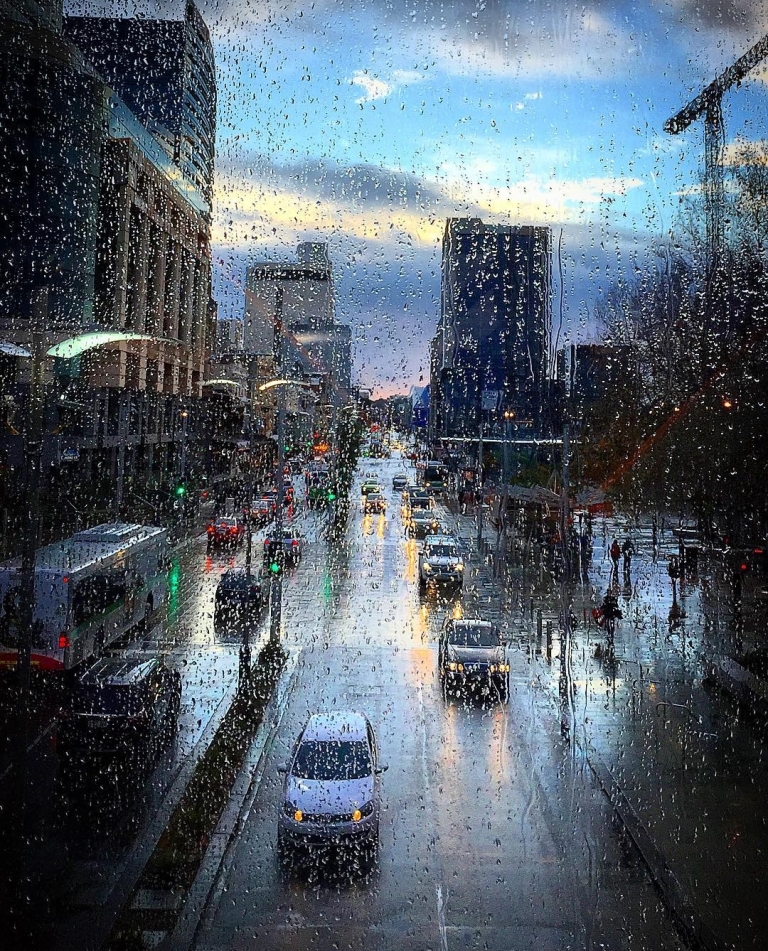
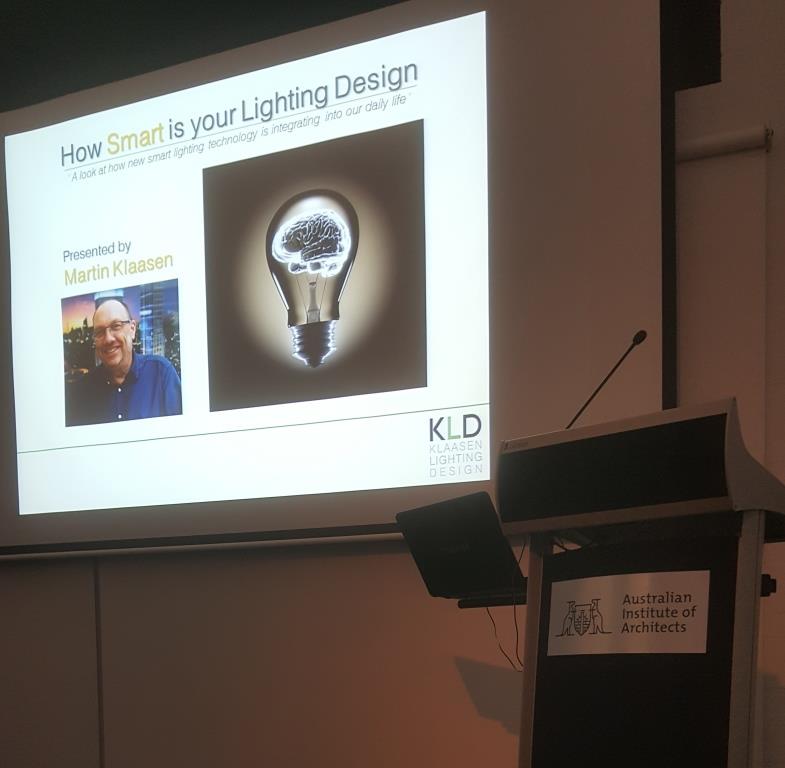
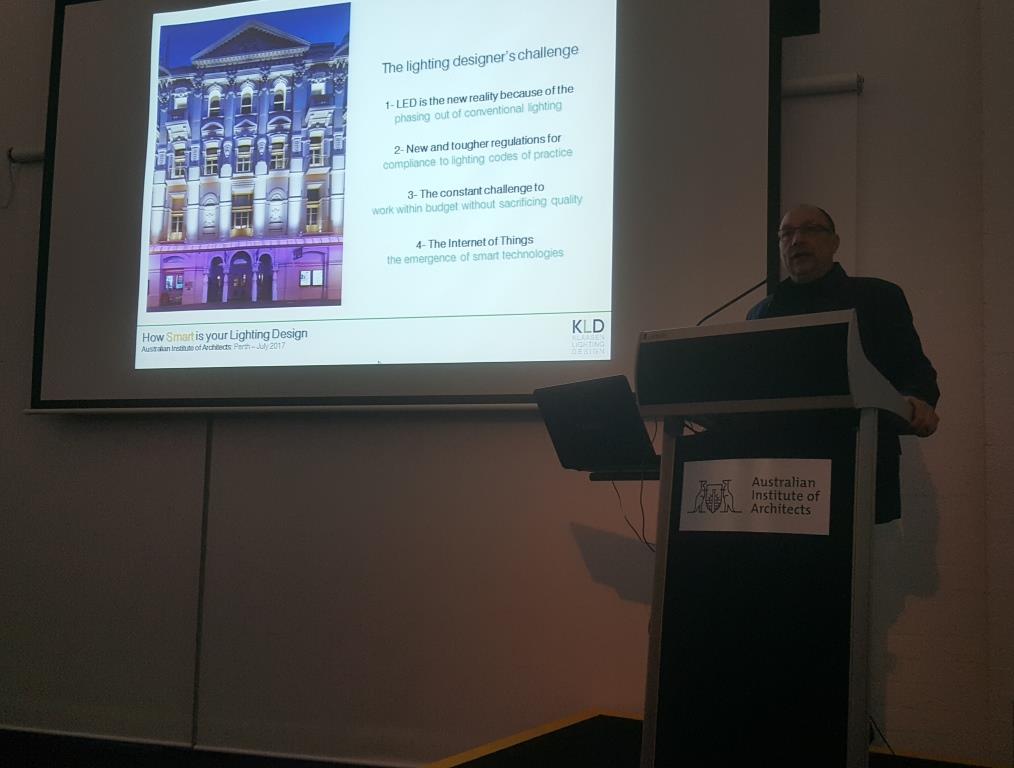
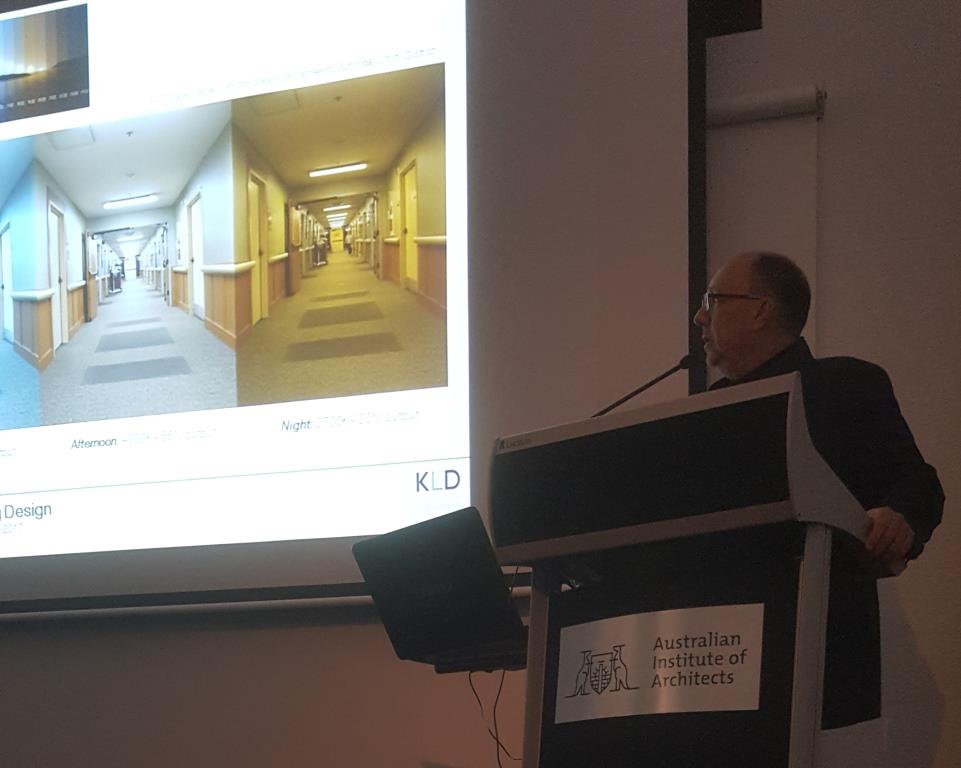
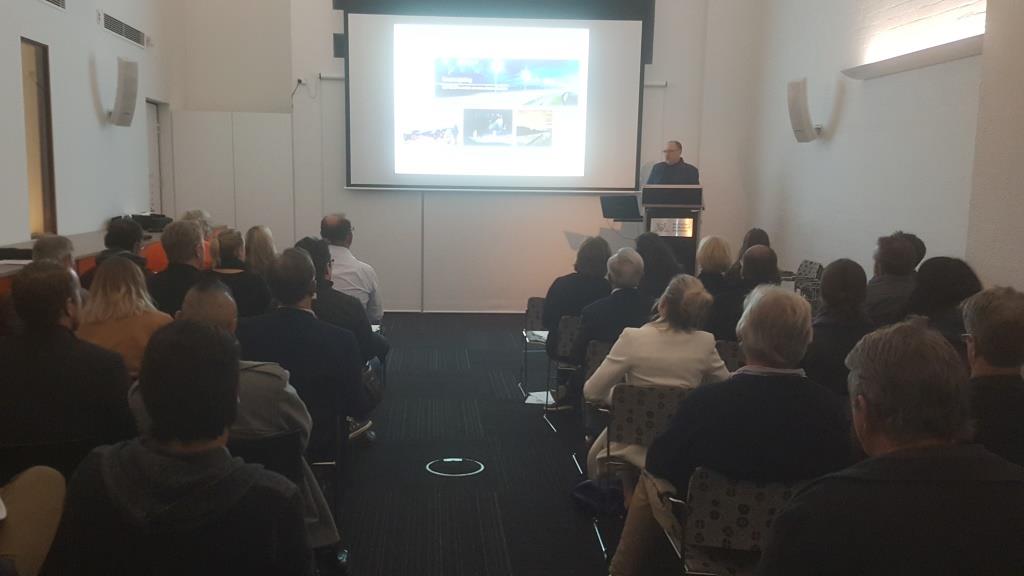
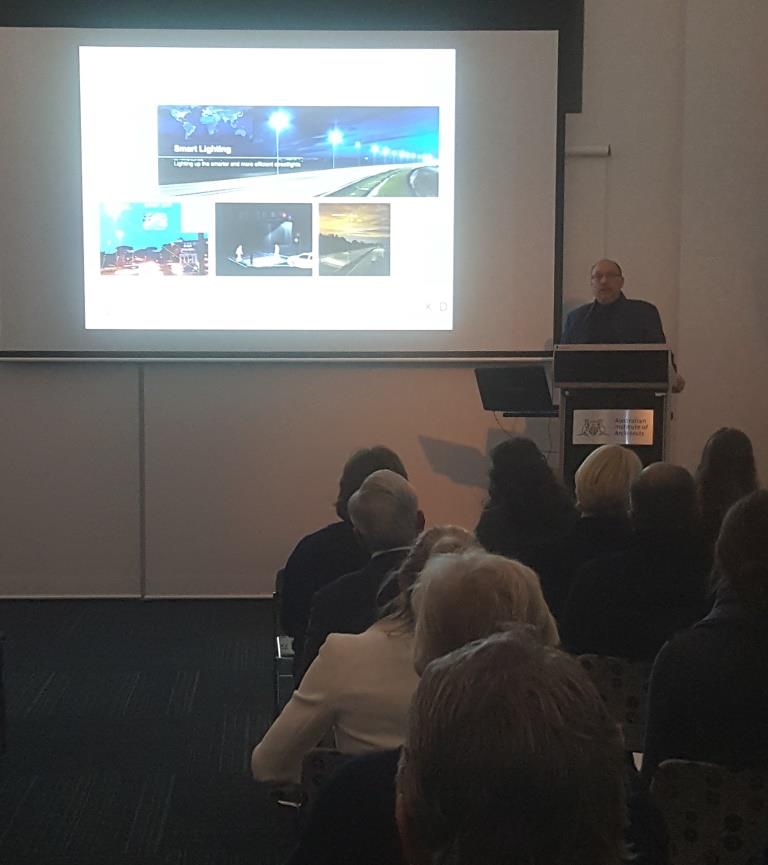
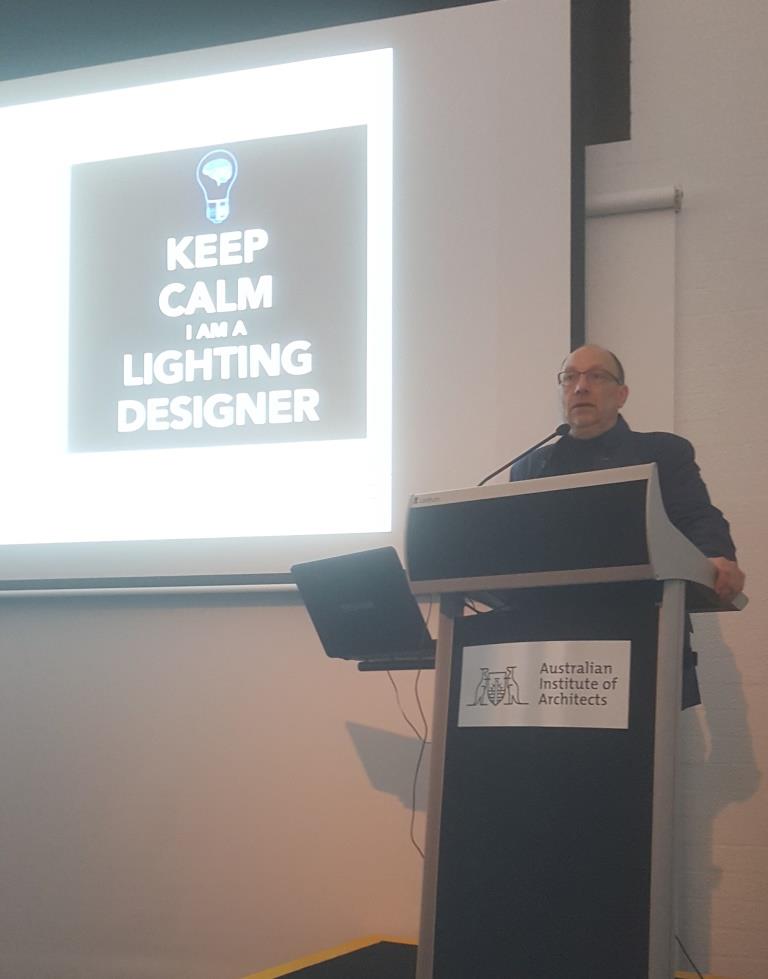


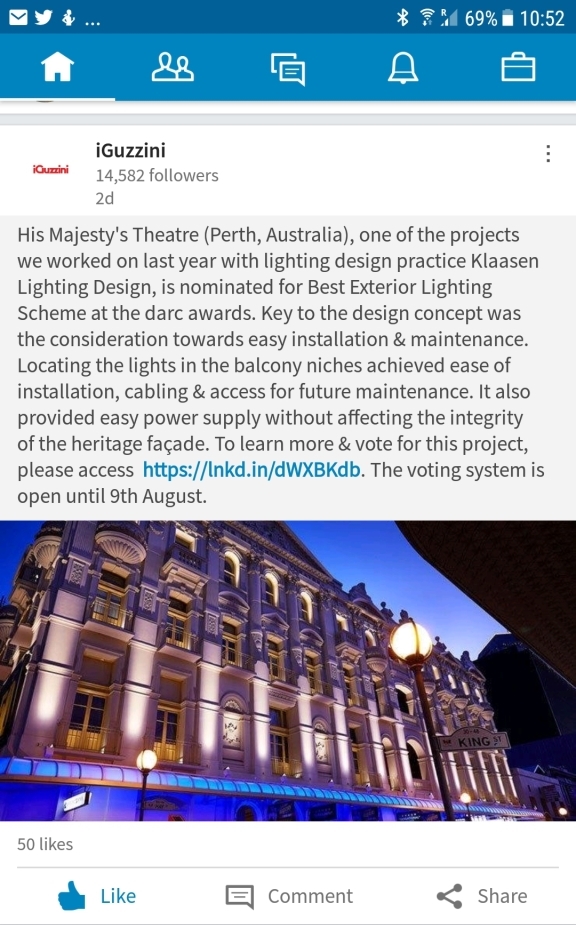

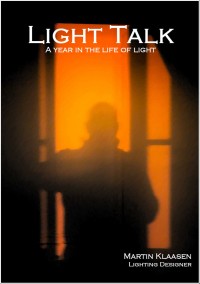 The long awaited book compilation of Martin's first year of blogging is available. Order now.
The long awaited book compilation of Martin's first year of blogging is available. Order now. Feedspot Top 100 Lighting Blogs
Feedspot Top 100 Lighting Blogs